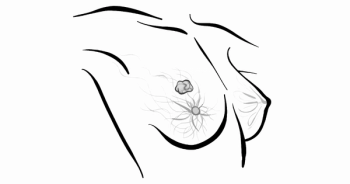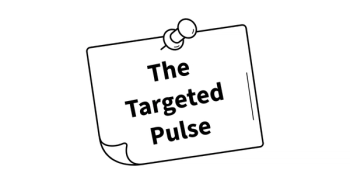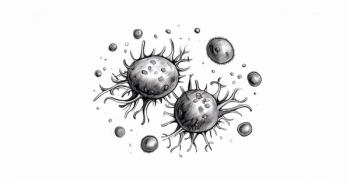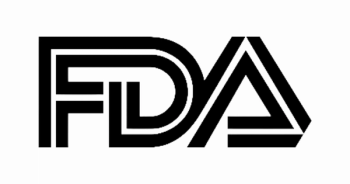
Targeted Therapies in Oncology
- April I 2025
- Volume 14
- Issue 5
- Pages: 41
Analysis Illuminates CAR T-Cell Optimization for CLL
Fewer prior therapies with liso-cel in chronic lymphocytic leukemia showed improved overall response rate in TRANSCEND-CLL-004 analysis.
Patients with fewer prior lines of therapy had improved overall response rate (ORR) with chimeric antigen receptor (CAR) T-cell therapy lisocabtagene maraleucel (liso-cel; Breyanzi) in patients with chronic lymphocytic leukemia (CLL). Findings from the post hoc analysis of the TRANSCEND-CLL-004 trial (NCT03331198) were explored for CAR T-cell therapy safety and optimization during the European Hematology Association/EBMT 7th European CAR T-cell Meeting in Strasbourg, France.1
“What we found is that it does not matter if patients have porous cytogenetics such as unmutated IGHV or a 17p deletion or a TP53 mutation, etc. These do not seem to correlate with efficacy and safety,” Tanya Siddiqi, MD, said during the presentation. “Age was also not a factor. What we did find was that if patients had lower numbers of prior lines of therapy...those patients seem to have a better overall response rate.” Siddiqi is medical director of lymphoma at City of Hope Orange County, director of the Chronic Lymphocytic Leukemia Program at Toni Stephenson Lymphoma Center, and professor in the Division of Lymphoma in the Department of Hematology & Hematopoietic Cell Transplantation in Duarte, California.
The multicenter, phase 1/2 TRANSCEND-CLL-004 trial evaluated patients with relapsed or refractory CLL or small lymphocytic lymphoma who were heavily pretreated with a median of 5 prior lines of therapy, including a Bruton tyrosine kinase (BTK) inhibitor. There were 117 patients with failed previous BTK inhibitor therapy and a subset of patients with failed prior treatment with venetoclax (Venclexta; n = 70). In the trial, patients received an intravenous infusion of lisocel at 1 of 2 target dose levels: 50 × 106 (dose level 1) or 100 × 106 (dose level 2).2
In the post hoc analysis, there were 87 patients with CLL who were evaluable for efficacy.1 For patients who received 3 or fewer prior lines of therapy (n = 22), the ORR was higher (54.5%; 95% CI, 32.2%-75.6%) than for those who had received more than 3 prior lines of therapy (n = 65; 44.6%; 95% CI, 32.3%-57.5%). The ORR was 1.49 (95% CI, 0.56-3.94).
In the analysis, patients with unmutated IGHV status (41 present vs 19 absent) had ORRs of 41.5% and 63.2% and complete response (CR) rates of 22% and 21.1%, respectively. Regarding del(17p) status (34 present vs 51 absent), ORRs were 47.1% and 45.1% and CR rates were 26.5% and 13.7%, respectively. For TP53 mutation status (36 present vs 50 absent), ORRs were 41.7% and 50% and CR rates were 22.2% and 16%, respectively. Patients with concurrent del(17p) and TP53 mutation (25 present vs 60 absent) showed ORRs of 44% and 46.7% and CR rates of 28% and 15%, respectively. Lastly, complex karyotype (52 present vs 34 absent) showed ORRs of 44.2% and 52.9% and CR rates of 19.2% and 17.6%, respectively. Age was also assessed and not found to be associated with response.
“We also found that if patients had bulky disease [tumor size defined as 5 cm or more in diameter], they had lower overall response rates,” Siddiqi stated. For those with the absence of bulky disease (n = 38), the ORR was 63.2% (95% CI, 46.0%-78.2%), and for those with the presence of bulky disease (n = 41), the ORR was 31.7% (95% CI, 18.1%-48%). The OR was 3.69 (95% CI, 1.46-9.37).
Regarding Rai staging, those with Rai stage from 0 to II (n = 37) showed a CR rate of 29.7% (95% CI, 15.9%-47.0%) and those with Rai stage from III to IV (n = 44) had a CR rate of 11.4% (95% CI, 3.8%-24.6%). The OR was 3.3 (95% CI, 1.03-10.61).
Lower inflammatory markers such as β2-microglobulin measured at the time of CAR T-cell infusion led to increased cytokine release syndrome, Siddiqi explained. “Interestingly, we also found that inflammatory markers, bulky disease, and lower estimated creatinine clearance may be associated with increased risk of neurological [adverse] events,” she added.
The post hoc analyses showed potential correlations between several pretreatment variables and the risk of neurological events (NEs). The mean surface product of the diameters (SPD) was 49.1 cm² in the any-grade NE group (n = 38) vs 27.7 cm² in the group without NEs (n = 41). For grade 3 or greater NEs, the mean SPD was 45.4 cm² (n = 17) vs 34.4 cm² (n = 62) in the group with no grade 3 or greater NEs.
Mean C-reactive protein levels were 16.6 mg/L in the any-grade NE group vs 5.1 mg/L in the group without NEs and 22.5 mg/L in the grade 3 or greater NE group vs 6.9 mg/L in the group with no grade 3 or greater NEs. Mean ferritin levels were 457 pmol/L in the any-grade NE group, 275.5 pmol/L in the group without NEs, 278.5 pmol/L in the grade 3 or greater NE group, and 258.8 pmol/L in the group with no grade 3 or greater NEs.
The estimated creatinine clearance (CrCl) rate was assessed in patients with any-grade NEs, with 53.3% having a CrCl less than 60 mL/min (n = 15) and 43.7% having CrCl of 60 mL/min or greater (n = 71). In patients with grade 3 or greater NEs, 46.7% had CrCl less than 60 mL/min (n = 15) and 14.1% had CrCl of 60 mL/min or greater (n = 71).
“We have [a] noncovalent BTK inhibitor now available in the US, and if I start treatment with pirtobrutinib [Jaypirca], I talk to the patient at that time, [saying], ‘This is only going to be effective for a year or so. We’d better get you on CAR T-cell [therapy] now while we have your disease under control. Maybe now when the bulk of disease is less and under some control, we collect your T cells and administer CAR T cells and give you time off any continuous treatment.’ That is where I am now with patients,” Siddiqi said.
Addressing further steps, Siddiqi explained that more combination therapies and targets such as B-cell activating factor receptor (BAFF-R) need to be evaluated. “We have a CAR T-cell trial with BAFF-R in lymphoma at City of Hope, and I am hoping to get funding for CLL as well,” Siddiqi said.










































